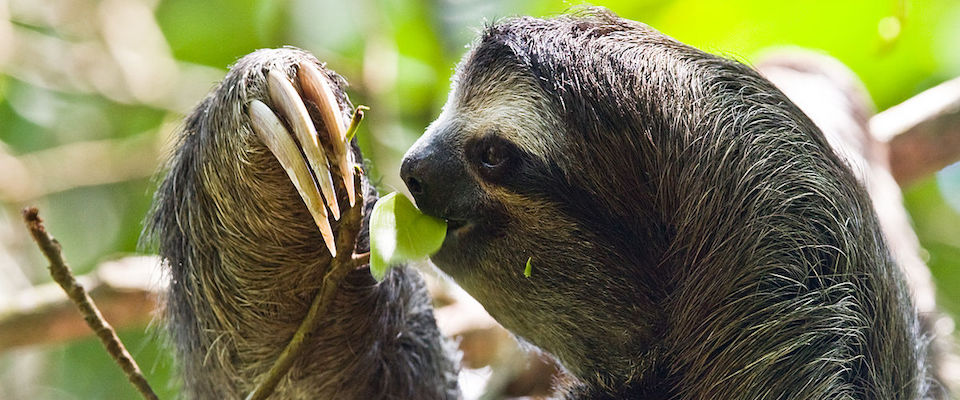Happiness: So fervently sought, so elusive. But just what the hell is it? Peanuts cartoonist Charles Schulz expressed his take in 1962 with his book Happiness is a Warm Puppy. That declaration gained a lot of pop (and pup) cultural traction, but it hardly told the whole story. Turns out the nitty-gritty of happiness isn’t quite so simple.
By conducting a meta-analysis of happiness research, UC Riverside professor of psychology Sonja Lyubomirsky concluded there were three contributing factors. Neuroscientist Emiliana Simon-Thomas, the science director for UC Berkeley’s Greater Good Science Center, explains each dynamic.
The first is genetics—whether you’re hard-wired for optimism or pessimism. That accounts for about 50 percent of one’s happiness quotient. Then there are life circumstances, continues Simon-Thomas, including professional and social status, wealth and health. That’s another 10 percent.
The remaining 40 percent is largely determined by our quotidian activities, including work, recreation and socializing. In this category, more is generally more, at least if it involves pursuits widely construed as constructive and entails stable social connections. In other words, you’re more apt to be happy by working the serving line in a soup kitchen than poaching spotted owls, driving drunk or scrawling graffiti.
We can’t do anything about our DNA, and it can be pretty difficult to alter life circumstances. The spangled path to wealth and fame, after all, is littered with the smoldering remains of the merely unlucky, and even those who’ve reached the pinnacle of material success can be brought low by a grim medical diagnosis or contentious divorce. But that 40 percent “activity” pie slice: That we can address.
And Simon-Thomas and Berkeley psychology professor Dacher Keltner want to show you how, or at least point you in the right direction. The duo is offering the nation’s first Massive Open Online Course (MOOC) on the Science of Happiness in September—and it’s such a hit that by the end of June some 50,000 people, mostly Millennials, had already signed up for the course. But don’t expect formulaic feel-good platitudes or New Age tips about connecting to a universal afflatus. The course, emphasizes Simon-Thomas, isn’t designed as a panacea for anomie.
“The class isn’t a solution,” she says. “It’s an exercise. What we’re trying to do is offer a window into that 40 percent, provide some science-based insights that could help people—even people naturally disposed to grumpiness—to move the needle toward the ‘good’ direction.”
As a foundation, students learn about the actual science behind the Science of Happiness: the findings in psychology, neuroscience and evolutionary biology that buttress the thesis that happiness is achievable (to a degree, anyway) through applied effort and the fostering of strong social ties. And each week, Simon-Thomas and Keltner introduce research-supported practices that can help people “move the needle” away from doom and gloom toward – well, if not slack-jawed, bleary-eyed bliss, at least relative contentment. Guest lecturers will include notable “empathy, mindfulness and gratitude” experts, including Lyubomirsky, Rick Hanson, Barbara Fredrickson, Paul Ekman and Jon Kabat-Zinn.
In general, says Simon-Thomas, happiness seems contingent on strong social ties. That goes a long way to explaining a phenomenon encountered by anyone who has traveled the developing world: Often, it seems, people who live in the most trying of circumstances—say, the slums of Manila or Mexico City, or the parched bushlands of northern Kenya—seem preternaturally happy.
“It often shocks people from industrialized western countries when they travel to developing countries and find a lot of truly happy people who are also truly poor,” says Simon-Thomas. “But those usually are people who conform to the research. They are part of an interdependent community. They have close family and social ties. They’re connected; they can draw from rich cultural resources held in common. As a species, we have been largely defined by cooperating relationships. That has been the norm for most of our evolutionary history. The standard of rugged individualism, of sticking your elbows out and making it on your own regardless of everyone else, of succeeding at the expense of others—that’s pretty new. And it may not be the best path to happiness.”
And as for Simon-Thomas? Does she practice what she preaches? Is she, in short, happy?
“Based on the perceptions of the people around me, I have to think of myself as middle-of-the-road,” she says. “I notice that some people definitely are gloomier. And I’m often humbled by people I encounter who seem joyful in what I’d consider a realistic way. I don’t struggle deeply with it, or with the purpose of life. Happiness doesn’t mean you have to walk around with a big stupid grin. It’s deeper, more nuanced than that.”




















